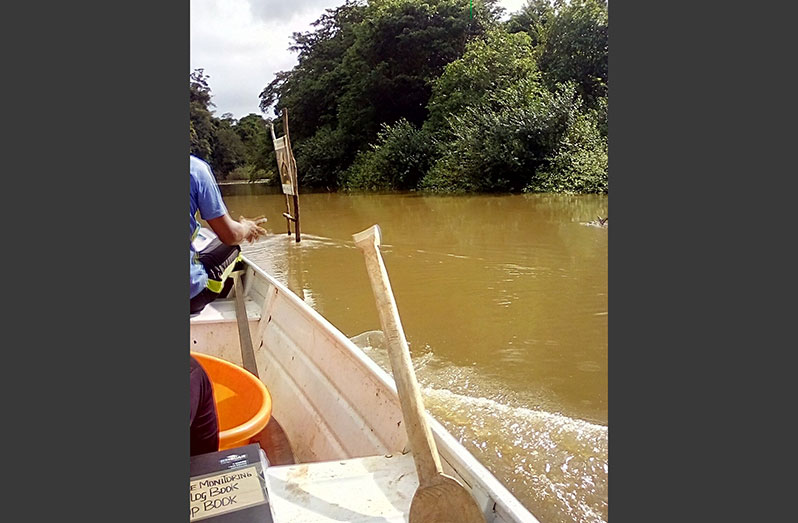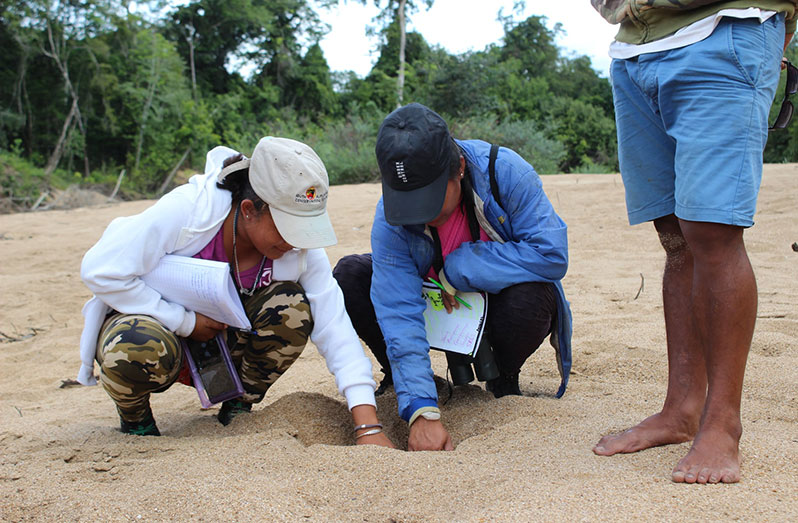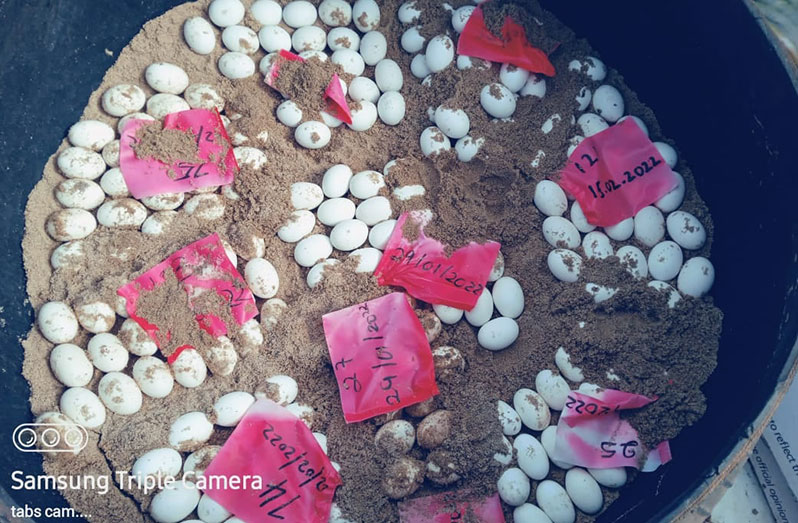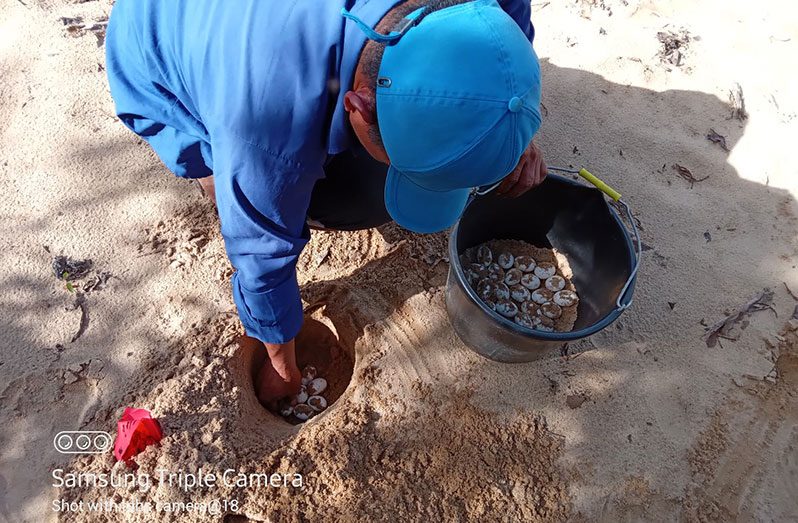AS conservationists, the folk at the South Rupununi Conservation Society (SRCS) and all those from the different Region Nine villages who work along with the body definitely do the work on the basis of their passion for the preservation of wildlife and the environment.
It certainly couldn’t be the money alone that is driving these individuals, as in many cases, they are required to go above and beyond the call of duty to get the job done in an effective manner.
This year, for example, rangers attached to the SRCS were able to rescue 127 turtle nests which represent more than 1,200 eggs, even as the Rupununi River continues to rise and give them little time to rescue the eggs.

“As such, the rangers had to work all day and late into the night to dig the eggs out. The eggs are also extremely delicate, so the rangers have to hold them in a very specific way in order to not damage them,” SRCS Programme Coordinator Neal Millar pointed out, noting, “The rangers should really be commended for their hard work and dedication, as well as for going above the call of duty.”
In the early 1990s, residents of Sand Creek Village in South Central Rupununi, Region Nine, used to see turtles in abundance every time they went to the river. In fact, as part of their cultural traditions, the village would even have a turtle “feast” whereby they would catch as many turtles as possible and eat them together sometime during the Christmas holidays.
Since that time, though, residents of Sand Creek have noticed a serious decline in the turtle population. The obvious, main threat for this was the overharvesting that occurred not only at Christmas time, but throughout the year as well. Villagers also frequently go to the beaches along the river during the hatching season to collect eggs as a local delicacy.

In response to the decline, the SRCS offered to collaborate with the village to start a turtle conservation project. The project involved training villagers from Sand Creek village to become “turtle rangers.” Since January 2021, these rangers have monitored 12 beaches where turtles lay their eggs along the Rupununi during the turtles nesting season (January to May) to protect the nests on those beaches from humans.
Each day the rangers go out and walk along the 12 beaches, looking for signs of new nests. They do this by looking for fresh turtle tracks. Once they find a new nest, they mark it with a flag and record the date they found it, the GPS location and the expected hatch date in their logbook. They also ensure that no humans are disturbing the nests during their patrols.

In addition, the rangers also protect the nests from wildlife that also prey on them, including the salipenter. From January 2022, the rangers set camera traps to see if they could catch prey in the act and found evidence of salipenters destroying the nests. The camera traps also caught shots of other wildlife that roam the beaches, including jaguars, pumas, tapirs and capybaras.
Before 2021, it was very uncommon for the river to rise so early and for the beaches to become flooded. “If our rangers had not been there, it would have meant that there would have been no new turtles for the last two years, which in the future will contribute to the population decline. In addition, if this trend continues, it is possible that in the next 20 years, the turtle population could become extinct as no new turtles are being given the chance to hatch,” Millar noted.

Like last year, the rangers have taken the nests back to their individual homes and will care for them until they hatch. They will then look after them until September 2022, when they will be released at the second “Sand Creek Turtle Festival.”
To overcome the issue of flooding in the future, Millar said SRCS will continue its partnership with Sand Creek Village to build a hatchery in the village. Then, at the start of the hatching season, 100 nests from the lowest beaches along the Rupununi River will be transported to the hatchery as soon as they have been laid to protect them from flooding. The rangers will move other low nests to higher beaches to ensure they can survive flooding where possible.

“However, if the trend of flooding continues, it will be necessary for rangers to be present on the river every year to protect the nests from flooding as there is such a short time to rescue the nests when the river unexpectedly rises,” he informed.
The project is being funded with the support of the Sustainable Wildlife Management – Programme Guyana, the Turtle Conservation Fund and ReWild.




.png)









